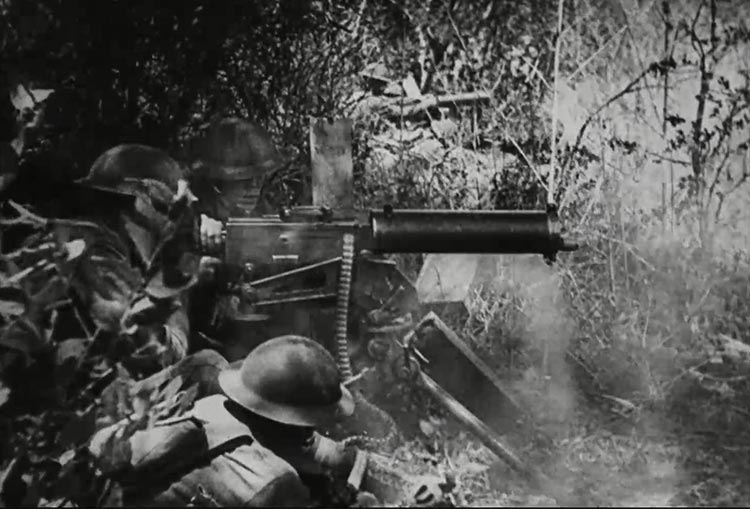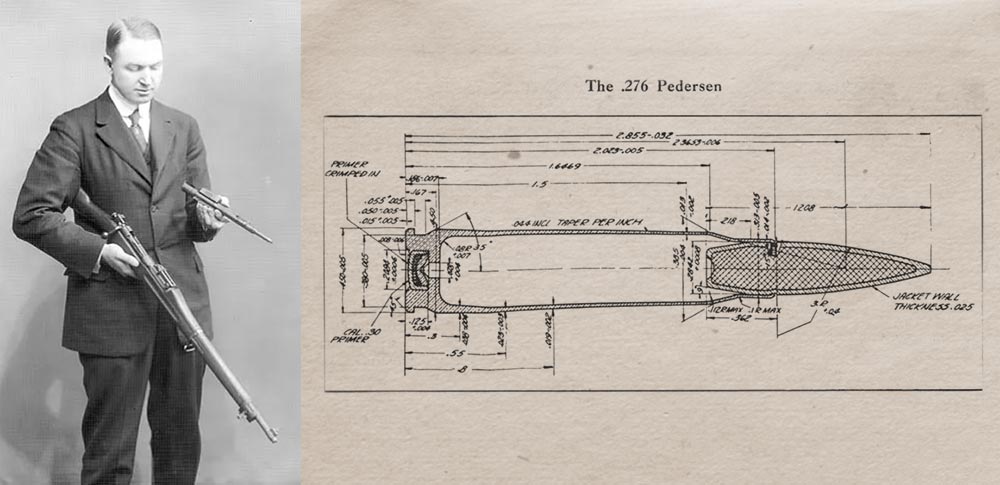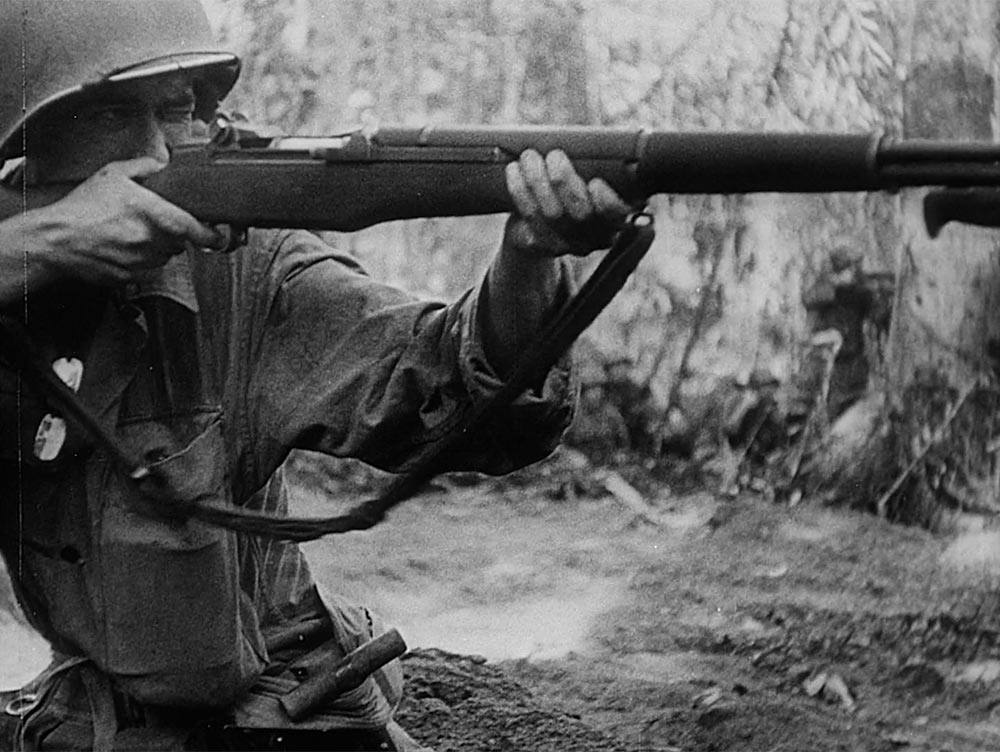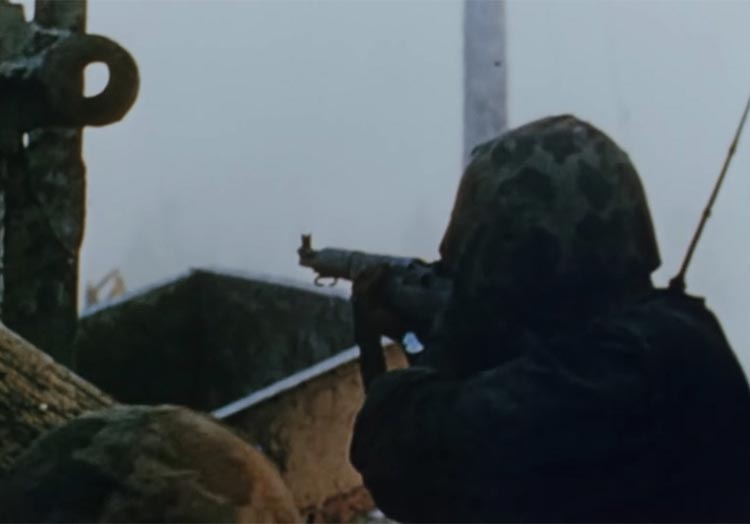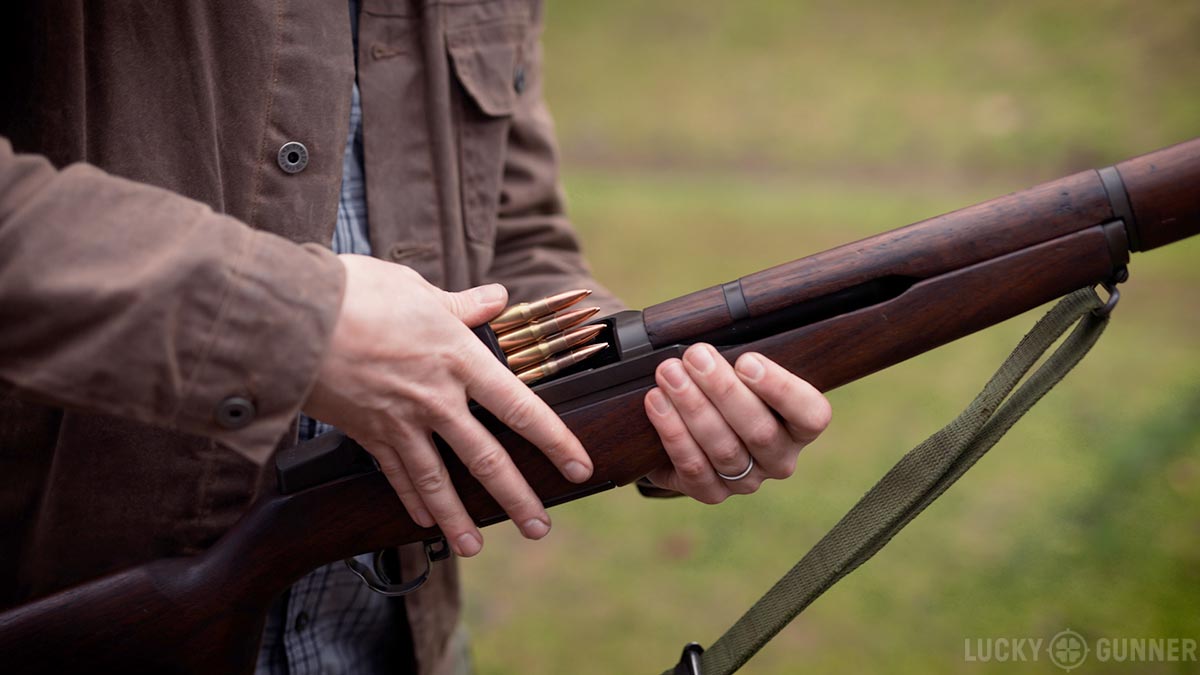Everybody seems to love the M1 Garand. But there’s a lot of the story behind this rifle that we don’t often hear much about. Today, we’re digging into that history.
How did a stubbornly traditional Pre-WWI US military eventually equip their soldiers with a state-of-the-art semi-automatic service rifle just a few decades later? And just what was it about that rifle that those soldiers liked so much?
Details are in the video below, or scroll down to read the full transcript.
You probably already know a lot about the M1 Garand. You know it was the standard service rifle of the US military during WW2. And that it stood out as the only semi-automatic rifle widely issued by any nation in that war. You know it has an 8-round capacity and fires the .30-06 cartridge. Of course, you know and love the iconic “ping” of the ejecting en bloc clip, as we all do. You might even know that it’s technically pronounced “Gar-uhnd” and not “Guh-rand” but you refuse to change because that sounds weird.
Today, I want to go beyond the gun itself and dig into the story behind it. We’re going to look at this in terms of three big questions. First, why did the US decide to pursue a semi-automatic service rifle at the time in history when they did? Second, how was the M1 Garand chosen for that role? And third, how did the M1 actually perform in combat?
Most of our answers come from three books I’m using for reference: American Rifle: A Biography by Alexander Rose, Hatcher’s Book of the Garand by Maj. Gen. Julian Hatcher and Shots Fired in Anger by Lt. Col. John B. George. These are all excellent books if you’re interested in the why, the how, and personal experiences behind the M1 Garand, as opposed to technical information.
I. Why did the US adopt a semi-automatic rifle just in time for WWII?
The M1 Garand was officially adopted by the US Army in 1936. On one hand, they were ahead of the times by mass-producing and issuing a semi-automatic years before any other nation. But from another perspective, it might look kind of like the Army was actually lagging behind the cutting edge technology of the day. Commercial gun makers like Remington and Winchester were producing semi-automatic hunting rifles as early as 1905. In 1902, the same year the Army adopted the bolt action Springfield rifle, the Chief of Ordnance explicitly said they were willing to test a semi-automatic as soon as one was submitted. So why did it take over three more decades for the military to adopt a semi-auto?
Ammo of the Future
The delay can be traced back to the Army’s commitment to the powerful .30-06 cartridge. The pressure created by this round was simply beyond what the commercial semi-autos of the time could handle. For example, a Remington Model 8 chambered for .35 Remington was intended for use on medium sized game inside about 200 yards. As far as the military was concerned, that was far too under-powered.
By comparison, .30-06 had been tested out to 1800 yards, and was believed to be effective at ranges thousands of yards beyond that. A cartridge that powerful generates a ton of pressure and in order to create all that pressure, you need a lot of gunpowder, which makes the cartridge case fairly long. A self-loading action has to contain that pressure as well as the force of a heavy bolt that’s going to move back and forth at high velocity. That’s a recipe for a rifle that’s just too big and heavy for general issue. So a self-loading military rifle didn’t seem like an imminent possibility at the time.
The Marksmanship Obsession
A marginally less powerful cartridge would have eliminated a lot of those design challenges. But in the pre-World War I era, there was little interest in anything less than what today we call a “full power” rifle cartridge. The invention of smokeless gunpowder in the 1880s made rifles capable of velocities and ranges that completely outclassed the old black powder guns. Long-range high velocity ammo was seen as the technology of the future.
Since the post-Civil War era, much of the Army’s leadership subscribed to an “accuracy first” view of warfare. They believed that battles are won by riflemen – everyone else on the battlefield is just there for support. Every rifleman was expected to fire accurate, aimed shots at 1000 yards or more. And this was all supported by a romantic notion from as far back as the Revolutionary War that American infantry marksmen are the best in the world.
Some high-ranking officers envisioned a future of sanitized, humane warfare where companies of sharpshooters stood well away from the front lines and took out enemies with minimal loss of American lives.
The Great War and a Reality Check
And then, the US joined the first World War. It quickly became evident that new technologies like artillery and machine guns were the dominant forces in the modern age, not riflemen. Very rarely did a soldier have the opportunity to take an aimed shot beyond 100 yards, let alone 1000 yards. Consider Sergeant Alvin York, for example, whose heroic battlefield marksmanship has been used to inspire generations of American riflemen. Even he admitted that most of his targets had been between 25 and 50 yards.
To their credit, military leaders adjusted their approach in light of the realities of trench warfare. They began emphasizing bayonet training alongside marksmanship. They issued close-range weapons like shotguns and handguns and they considered adopting the Thompson Submachine gun. The Ordnance Department approved production of the Pedersen Device which would convert bolt action Springfields to a 40-shot semi-automatic with a .30 caliber pistol cartridge.

Those last two developments came too late to be used in the War. But the seeds of change had been planted. Modern warfare called for a service rifle that favored volume of fire over long range accuracy.
II. How was the M1 Garand chosen as the US service rifle?
As soon as the war ended, the US began to pursue, in earnest, a self-loading service rifle. But they did not give up their commitment to the .30-06 cartridge. They wanted to improve the volume of fire each soldier could deliver, but not at the expense of power and range – priorities that remained until well into the Vietnam War. The preoccupation with long-range marksmanship was just too deeply ingrained in military culture. As an example, the list of requirements for the new rifle included a windage-adjustable rear sight graduated up to 1000 yards. And they expected it to weigh about as much as the 1903 Springfield – not more than nine and a half pounds.
Early Design Challenges
So with those design parameters in place, the government started throwing serious resources behind this project in the 1920s. The Ordnance Department employed several teams and individuals to work on various designs. They also accepted submissions from gun companies and independent inventors. There were dozens of designs that looked promising early on, but most had major shortcomings on the test range.
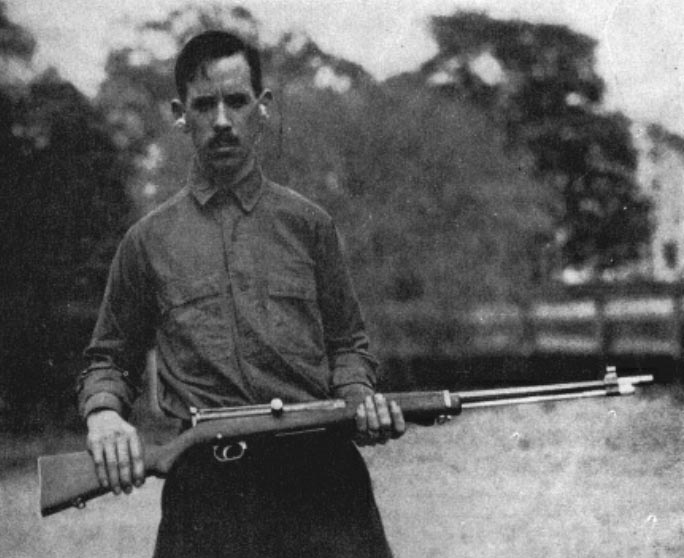
A lot of the problems came from the massive amount of heat generated when rapidly firing 100 or more rounds of .30-06 over a short period. Parts would break. Stocks would burn. Cases would fail to extract. Some of the designs relied on lubricated ammunition or fragile complex mechanisms. Ultimately, none of these solutions were suitable for the battlefield.
Doubts began to arise over whether a sub-10 pound semi-auto .30-06 was even possible. Some of those involved with the project speculated that the War Department would ultimately have to settle for a heavier rifle or a smaller cartridge.
The Pedersen Proposal
Among the doubters was John Pedersen, the brain behind the Pedersen Device. In 1924, he proposed a theoretical rifle chambered for a new .276 caliber cartridge of his own design that would be ideally suited for a semi-automatic action. It would have the same velocity as .30-06 with only a 17% reduction in bullet mass. A rifle firing this cartridge could be shorter and lighter. It would deliver half the felt recoil and would be free of overheating issues.
Pedersen is not exactly a household name today, but at the time, he was highly respected in his field. John Moses Browning even said Pedersen was “the greatest living arms designer, and probably the greatest of all time.” If anyone with less industry clout had proposed a completely new rifle cartridge, they probably would have been ignored. But instead, the Ordnance Department hired Pedersen. He got his own private workshop and support staff so he could pursue his new rifle along with the cartridge that became .276 Pedersen.
To be clear, Pedersen was not proposing an intermediate cartridge like what most militaries were using by the late 20th century. This was still a full power round, it was just slightly smaller in diameter. Years later, when the Army conducted medium and long range terminal ballistic tests on live anesthetized pigs and goats, the .276 Pedersen performed right on par with .30-06, and even a little better in some cases.
Early Garands
In the meantime, not all of the .30-06 prototype rifles were a complete disaster. A quirky, self-taught French-Canadian inventor and machinist named John C. Garand had worked on a machine gun design that eventually landed him a job in the Ordnance Department. In 1919, he was assigned to the new semi-automatic service rifle project. Garand’s early designs bear little resemblance to the finished M1. The method of operation and the bolt were completely different. They used detachable 20 and 30-round magazines which, apparently, was not a feature his superiors appreciated. But these were functional enough that he was encouraged to continue improving his design.
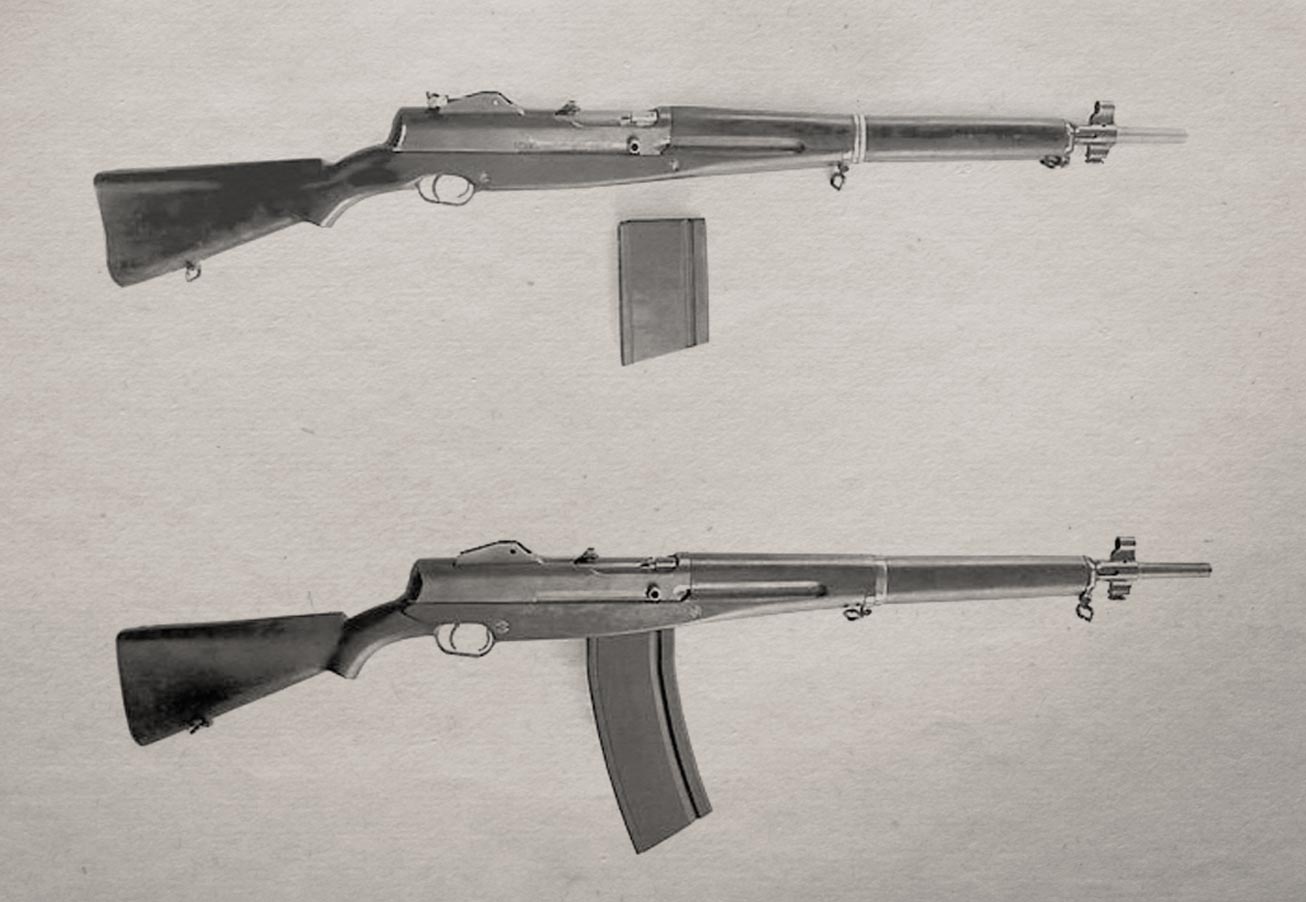
Following years of revisions and redesigns of his .30-06 rifle, in 1928, Garand was asked to make a sample chambered for the new .276 Pedersen cartridge. The War Department was leaning toward a change in caliber, but they had not yet decided on a rifle. This was just after Garand had worked through a major redesign anyway. He added the gas-operated mechanism that we find on the M1 today. It didn’t take too long for him to work out a version in .276 with a 10-round clip – a rifle that very closely resembles the finished product. Within a couple of years, he delivered twenty experimental Garand T3E2 rifles for testing.
Final Trials and MacArthur’s Intervention
By 1931, the field of candidate rifles was narrowed down to Pedersen’s T1 rifle and the Garand, both in .276. Samples were subjected to multiple rounds of testing by representatives from the Army, Navy, and Marine Corps. All the reports show that the .276 Garand was more accurate than the Pedersen rifle. It was also a simpler design with fewer and less fragile parts. The Pedersen had a fairly complicated toggle-style bolt, similar to the German Luger pistol. One of the range reports complained that the bolt would occasionally poke holes in their hats. Most importantly, the Garand did not require lubricated ammo while the Pedersen did.
At the start of 1932, the War Department was ready to give its final stamp of approval to begin production of the .276 Garand. And then, the Army’s Chief of Staff, General Douglas MacArthur himself, personally stepped in and put the brakes on the whole thing. He strongly objected to a change in caliber saying, “To make this change will introduce an element of chaos, confusion, and uncertainty which, magnified under war conditions, would more than counteract the beneficial effect of any semi-automatic rifle. The recommendations seem to have been somewhat influenced by the technical perfection of the smaller caliber. Too little attention has been paid to the other important features involved.”
It might have been nice if he had mentioned that a few years earlier. Nevertheless, MacArthur ordered everybody to go back and just figure out a semi-automatic that could handle the existing .30-06.
.30-06 Garand Becomes the M1
Fortunately, Garand had continued developing a .30 caliber rifle alongside his .276 version. In previous tests, it didn’t hold up as well as the .276, but it was close enough with a few minor corrections. It took another few years to make a batch of experimental rifles and conduct some rigorous field testing. The finished rifle was approved at the end of 1935 and in January 1936, the order came down to begin production.
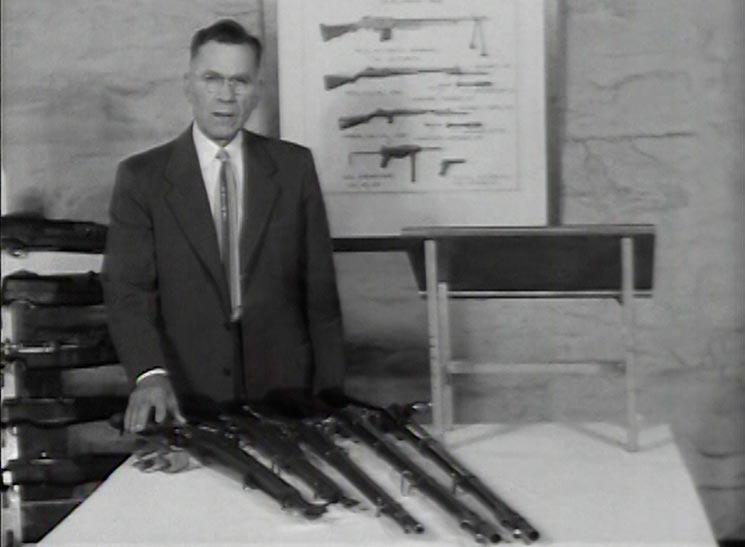
Not surprisingly, there were some issues with the early production rifles. That’s bound to happen when any design goes into full-scale production. That all got ironed out eventually, and by June of 1941, just a few months before the attack on Pearl Harbor, the Ordnance Department was cranking out 1000 M1 Garands per day.
III. How did the M1 Garand perform in combat?
Early Impressions
Like you might expect with any new technology, GIs were skeptical about the semi-automatic M1. Veteran soldiers predicted that it would be unreliable and less accurate than their beloved 1903 Springfields. Officers worried that new recruits would be slow to figure out the more complicated design.
But by the end of the war, the M1 Garand was almost universally praised by the men on the ground and officers at every level. You’ve probably heard the famous line from General Patton where he called the M1 the “Greatest battle implement ever devised.” Of course, Patton was prone to a bit of hyperbole, so take that with a grain of salt. But he was not the only one heaping praise on this rifle.
In terms of training recruits on the Garand versus the Springfield, Army Brigadier General Sidney Hinds said, “The biggest hit scored in favor of the Garand in the transition period was the time (and elbow skin) saved in rapid-fire practice. No more bolt manipulation thirty times in thirty seconds with the trigger tied back!”
He goes on to talk about the advantages this had in combat. Knowing that only your side had semi-autos could be a huge morale booster. He believed it had the opposite effect on enemy morale. Hinds claimed that German soldiers commonly believed every American carried a machine gun.
Reluctant Marines
The rifle got its first real battlefield use in the South Pacific in 1942, but its arrival was somewhat delayed. At that time, most of the Marine Corp was resistant to switching over to the M1. As Army Lieutenant Colonel John B. George reported it, “Nearly all of the Marine personnel had been armed with the Springfield, reportedly because of Corps preference — not because of the unavailability of Garands. So the first ‘allied aggressive effort’ of World War II was made with a World War I rifle. The mistake was soon realized.”
Marine Colonel W.J. Whaling gave an account of what happened when the first Army troops showed up at Guadalcanal with Garands. “[The Marine scouts] had had about two months’ intensive fighting experience against the [Japanese]… These scouts cautiously investigated the Garand, and tried it out in the heavy jungle areas. They liked it; they gained a certain assurance and confidence with those three extra rounds in the magazine. Less kick in the recoil encouraged the timid to shoot better.”
George was also on Guadalcanal and offered a more colorful opinion from the Army side: “From almost the first minutes of combat on Guadalcanal the Marines began wishing for a basic semi-auto rifle. By the time we landed we had to keep ours tied down with wire… When the Marines began to get a few Garands up to the front, the demand proportionately increased. They quickly learned that the M1 did not jam any more often than the Springfield, and that it was equally easy to maintain.”
Reliability
On reliability, Whaling says this: “Salt water, sand, volcanic ash, clay and mud: all conspired to clog the working parts of Joe’s weapon. Then the heavy tropical rains, which kept the jungle wet most of the time, made it essential that the supply of gun oil be constant. Rust, mildew, mould, and dirt forced careful attention to all firearms as the most urgent form of life insurance.
”The M1 Garand stood up exceedingly well under these conditions. With reasonable care, it will work every time, for it has great sturdiness and dependability.”
The Marines did eventually get their own M1s. According to Hatcher, “The greater fire power of the Garand, its superior sights, its freedom from mechanical troubles, and its ready removal from the stock which made for ease of maintenance all made the Marines put up a howl for the M1 which was heard as far away as Washington. Later Marine units landing on the island came equipped with the M1 and were highly satisfied with it.”
Other Advantages of the M1 Garand
The ability to fire your weapon repeatedly without manually cycling a bolt seems like it would have some self-evident advantages. It also has benefits that aren’t so obvious to those of us who have never been in combat. It turns out most targets are not all that easy to see. Here’s another quote from Col. George:
“Such a weapon allows the doughboy to fire several shots in rapid succession, trebling the effectiveness of his fire against briefly exposed or fleeting targets, which are the types most often encountered in combat. He does not have to aim at the exact outline of an enemy concealed in the brush, he can blaze away at an approximate location and distribute his fire so that he will be very likely to score a hit.”
General Patton wrote something similar in a 1944 letter of instruction to his commanders: “The M1 rifle is the most deadly rifle in the world. If you cannot see the enemy, you can at least shoot at the place where he is apt to be.”
Almost every veteran account of the Garand mentions the low recoil. It’s a big gun firing a big cartridge: it’s not exactly gentle. But as long as you mount it correctly, it won’t beat you up, either. It’s much softer shooting than a bolt action. That would have lots of advantages in training recruits. It helps avoid recoil anticipation and other bad habits.
Room for Improvement
The M1 Garand did have some flaws. Most of them were minor, but there are two in particular that combat veterans seem to mention fairly often. First is the weight. A loaded M1 with a World War II-era leather sling weighs 10 pounds. Even by 1940s standards, that’s pretty heavy.
The other problem was the inability to top-off or reload the M1 before it’s empty. If you want to reload a partially full Garand, you first have to either manually eject all the rounds in the gun or fire off all the rounds until it’s empty, which was the more common method in the field. The higher-ups didn’t like this because it meant wasted ammunition. The guys on the ground didn’t like it because it was a liability in combat. Col. George puts it like this:
“Picture the plight of the soldier whose unit is in the assault, who has fired four or five very necessary shots, and then finds himself under the last bit of cover, only a few yards from the enemy positions. What can he do? In a moment he will have to spring up and rush the enemy shelters. It would be awfully nice for him to have a full eight rounds ready to fire then, but he has only three. Or was it two? Hard to remember.”
The solution, of course, was to redesign the M1 to feed from a detachable box magazine. But for the US, that innovation didn’t come for another decade and a half after the war when they adopted the M14 in 1959.
The Story Continues
The M1 continued to serve as the standard infantry rifle of the US Armed Forces after World War II, through the Korean War and most of the 1950s. It started out as a rifle that was superior in almost every way to the enemy’s rifles. And then desperately outdated by the end of its 22-year service life. But that is a story for another day.
I hope you guys enjoyed hearing about how the M1 Garand became the rifle we know and love. If you did, please subscribe to our channel and the next time you need some ammo, be sure to get it from us with lightning fast shipping at LuckyGunner.com.
The post How Garand’s Rifle Became the M1 appeared first on Lucky Gunner Lounge.




